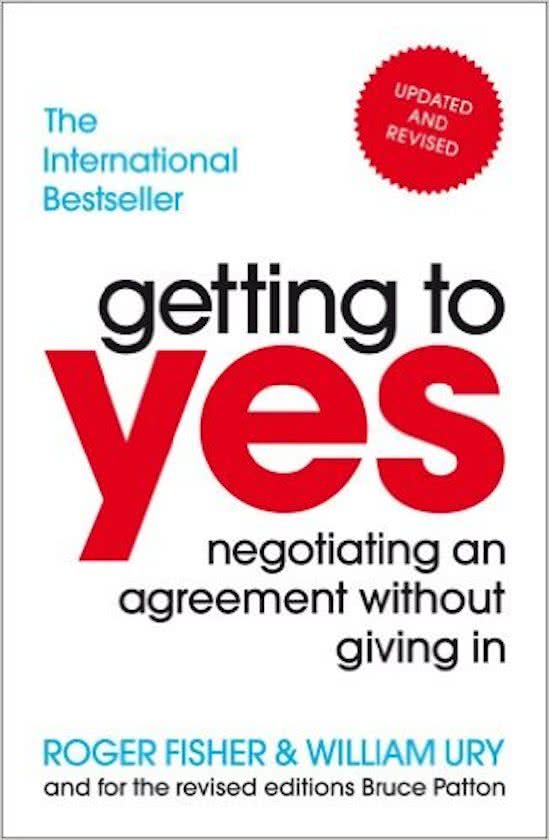MNGY Lecture 1 l Introduction and essentials of the course
Negotiations happen in our daily lives → ‘there is dramatic (and disturbing) evidence that
most people do not live up to their negotiating potential’ (Thompson, 2015).
Negotiating can be learned (Thompson, 2015):
- Naturally gifted negotiators are rare
- Effective negotiation requires ‘practice and feedback’
How do you learn to negotiate?
● Theory → lectures, book and articles.
● Practice (‘learning by doing’) → tutorials with role-play simulations.
This course is about achieving good negotiating outcomes in negotiating situations:
- This course is not about outsmarting / tricking the other.
- Ideal if your ‘opponent’ is also trained in negotiation.
- Best outcomes when both negotiators are experts.
The course consists of three main parts:
1) Analyze negotiations from a rational and
strategic perspective → try to make predictions
about people’s behavior in negotiation
situations assuming rationality and strategic
decision-making (assuming that people are
rational and self-concerned)
2) Allow emotional and psychological factors to pay
a role in negotiations
3) Address cross-cultural differences in negotiation situations → we interact more and
more with people from different cultures.
➔ As the course develops, adding more complexity, approaching reality better.
➔ Everyone is a negotiator and negotiation is everywhere.
The importance of negotiation in career:
- The average person stays in their job 4.4 years (Meister, 2012).
- Decentralized decision-making in businesses: less hierarchy means continuous negotiations.
- Freelance economy: negotiating every gig/project.
- Entrepreneurial environment: negotiating many deals.
What is negotiating about? → it is about integrating interests:
An organization has a particular interest and an organization is
composed by different individuals → the interests of the
organization and the interests of the individual can overlap:
negotiating is about finding the overlapping interests and trying to
put and transform them into an agreement.
,Definitions of negotiation:
● Narrow definition → ‘a process in which two or more parties exchange goods or
services and attempt to agree upon the exchange rate for them’ (Robbins, 2001).
○ Focuses on the exchange rate for traded goods or services.
● Broader definition → ‘negotiation is an interpersonal decision-making process
necessary whenever we cannot achieve our objectives single-handedly’
(Thompson, 2015).
○ Thompson proposes a more global view of negotiation as a interpersonal
decision-making process → it is not only about the exchange rate, but it is
a decision-making process where two or more people interact.
○ It is a process that is necessary when we cannot achieve our objectives single-
handedly.
Scope of negotiations:
- One-on-one versus multiparty
- Few dollars versus billions of dollars
- Few minutes versus years
- Single encounter versus long-term relationship
Types of negotiations:
● Between two persons or multiple persons: salary negotiations, divisions of tasks within a
team.
● Between two organizations or multiple organizations: mergers and acquisitions, joint ventures.
● Between two countries or multiple countries: border conflicts, EU negotiations (Brexit).
● Between an organization and a social movement: Shell versus climate activists.
● Between an organization and a state: e.g. negotiations on the development of Israel with the
United Nations (UN).
Single issue, distributive negotiation →
one party’s gain is the other party’s loss: how to
distribute the negotiation pie?
Target points, reservation points and
bargaining zone → definitions:
● Target point / aspiration point: price you
would be happy with.
● Reservation point: price at which you
are indifferent between getting the
deal or not getting the deal → this is
(theoretically) the worst possible
acceptable outcome.
● Bargaining zone / zone of possible agreements: range between the reservation points of
both negotiators.
We have to define a target point / aspiration point for both the buyer and the seller and we have to find
a reservation point for both the buyer and the seller to be able to describe and define a bargaining
zone where the negotiation takes place.
How to determine the aspiration point?
Determining the target point / aspiration point sounds straightforward, but three problems might arise:
, 1. Underaspiring negotiator → settles for too low: often, the first offer is accepted
immediately.
2. Overaspiring negotiator → wants to settle for too high: refuses to make concessions.
3. Grass is greener negotiator → doesn’t know what (s)he wants to settle for, only that it is
more/different than what the other party is willing to offer (reactive).
How to determine the reservation point?
● Before you start negotiating, you should determine your reservation point (the price at which
you are indifferent between getting the deal or not getting the deal).
● Consider the consequences of failing to reach an agreement, and know your alternatives.
● Determine your BATNA (your Best Alternative To a Negotiated Agreement) and quantify it.
BATNA → example of getting a job:
- MBA student looking for a job
- EUR 60.000 job offer from company A
- Student is interested in getting an offer from company B
- BATNA: EUR 60.000 from company A
Another example about selling a house
→
Your BATNA, in this example, is your best
alternative for not selling the house.
What is the purpose of a BATNA? → your
BATNA protects you against to types of mistakes:
- Accepting an agreement you should reject
- Rejecting an agreement you should accept
Characteristics of the BATNA:
- Determines lowest value acceptable.
- If you don’t reach an agreement, settle for your BATNA.
- Any deal higher than your BATNA is better than impasse (a deadlock) → better
than not reaching an agreement.
➔ BATNA’ s are time-sensitive, they can change over time and they need to be available
immediately.
The better your BATNA, the greater your power:
Negotiation is not (directly) defined by wealth, political connections, physical strength, friends, military
might, etc.
- It is defined by → your alternative: attractiveness of not reaching this specific agreement.
➔ Having good alternatives through a negotiation situation increases your power during the
negotiation greatly.
To improve your BATNA, you can apply the following rule → the ‘falling in love
rule’:
- Never fall in love with one job, one house, etc.
- Always keep multiple options open.
- Constantly try to improve your BATNA.
How do you formulate a reasonable BATNA? → your BATNA should be based on
facts:
● Your BATNA is not something that you wish for: it is determined by objective reality.
, ● Don’t let your BATNA be influenced by the other party’s persuasion techniques. Your BATNA
should only change as a result of objective facts and evidence.
● However, of course, in real life you deal with:
○ Incomplete information
○ Uncertainty (e.g. unverifiable information)
○ Multi-dimension agreements
What can you do in practice?
1) Brainstorm your alternatives
2) Evaluate each alternative
3) Attempt to improve your BATNA
4) Determine your reservation price
Keeping the BATNA of the other side in mind:
- Often, the aspiration point of the other side is quite clear.
- More important is: what is their reservation price?
- Try to estimate the BATNA of the other side.
- But: also be modest about what you really know.
If the bargaining zone is very small,
then you will need very skilled
negotiators →
Lose-lose scenario:
‘Trades would not take place unless it were
advantageous to the parties concerned. Of
course, it is better to strike as good as
bargain as one’s bargaining position
permits.
The worst outcome is when, by overreaching
greed, no bargain is struck, and a trade that
could have been advantageous to both parties does not come off at all.’ (Benjamin Franklin)
When the bargaining zone is negative,
it would be better for both the buyer
and the seller to not make the deal →
When the bargaining zone is negative, both
parties will eventually exercise their
BATNA’s.
Getting to yes?
- ‘The goal of negotiating is not to
reach just any agreement, but to
reach an agreement that is better for
you than what you would get without
one’ (Bazerman & Neale, 1992).
- ‘We are not concerned with ‘getting to yes’. Our work shows that in many cases, no
agreement at all is better than ‘getting to yes’’ (Bazerman & Neale, 1992).






